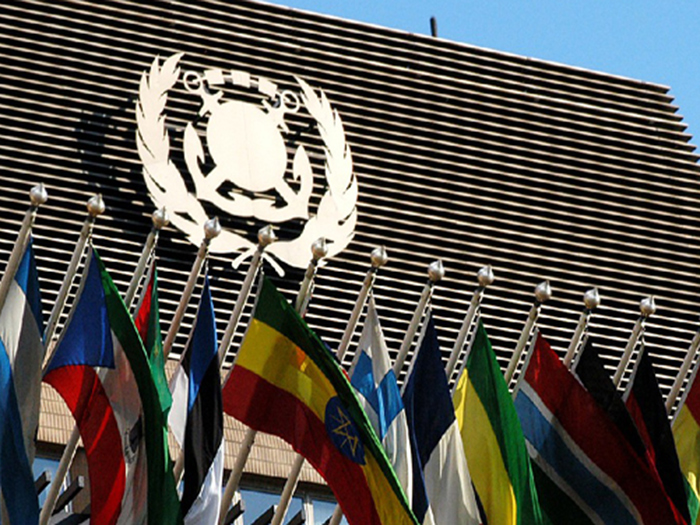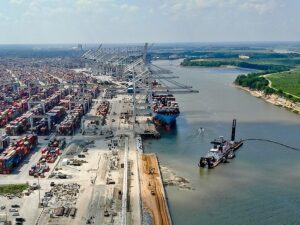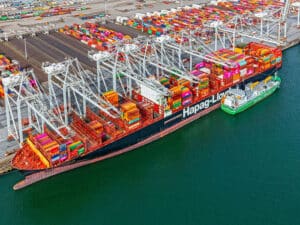
MEPC 76: No moon shots
Written by Nick Blenkey
Image: IMO
Disappointing those who naively supposed it capable of bolder things, the 76th meeting of IMO’S Marine Environment Protection Committee (MEPC) concluded yesterday after passing a package of measures to cut the carbon intensity of international shipping that have been widely seen as inadequate. Decisions on such things as the industry-supported “moon shot” plan for a $5 billion green technology R&D fund were kicked down the road.
Commenting on the meeting, the Danish Maritime Authority (DMA) says the agreement reached at MEPC implies that from 2023 to 2026 ships must reduce their greenhouse gas emissions by a total of 11%. The question of how much further ships should further reduce emissions from 2027 to 2030 remains open, and could be decided in 2025.
Denmark went to the negotiations with a clear goal that the IMO’s climate strategy and its goal of at least a 40% reduction by 2030 must be met, and that the short-term rules should show a clear path to achieving this.
“Unfortunately, it was not possible to reach an agreement on that ambition. It is positive, however, that despite difficult negotiations with very different views on the matter, we managed to land an agreement that sticks to the 2030 target and leaves traces for the first years – although not with as high ambitions as we wanted,” says Danish Maritime Authority director Andreas Nordseth. “We are now continuing our efforts and must now focus on the requirements in the medium and long term, so that international shipping is not left in doubt that the reduction targets must be met.”
That moon shot initiative?
“Unfortunately, the proposal did not receive the support that the Danish side had hoped for,“ says the DMA.
The official IMO version says that “The Committee had a non-exhaustive consideration of a proposal to establish an International Maritime Research Board, funded by a tax on oil fuel used by shipping. The discussion will resume at the Committee’s next session.”
Other commentators have been less measured in their assessment than the DMA.
OPPORTUNITY MISSED
“This week the IMO showed us the limits of its ambition by failing to take action for the climate or our ocean. It had a rare opportunity to strengthen a short-term climate measure to reduce greenhouse gas emissions this decade, act on black carbon pollution, adopt a robust plan for mid-term measures including a carbon levy on CO2, improve a ban on the use of heavy fuel oil and engage in discussions on scrubber discharges,” said Ocean Conservancy Shipping Emissions Campaign Manager Dan Hubbell. “Yet on all these issues what we have is delay or little better, in spite of the best efforts by some 40 countries like Marshall Islands, Solomon Islands, Tuvalu and the United States.”
Expect a torrent of similar statements from other groups over the next few days.
SHORT TERM MEASURES
Meantime the short-term measures agreed, which will be mandatory measures under MARPOL Annex VI, will bring in:
Attained Energy Efficiency Existing Ship Index (EEXI)
EEXI is required to be calculated for ships of 400 gt and above, in accordance with the different values set for ship types and size categories. This indicates the energy efficiency of the ship compared to a baseline. Ships are required to meet a specific required Energy Efficiency Existing Ship Index (EEXI), which is based on a required reduction factor (expressed as a percentage relative to the EEDI baseline).
Annual operational carbon intensity indicator (CII) and CII rating.
The CII determines the annual reduction factor needed to ensure continuous improvement of the ship’s operational carbon intensity within a specific rating level. The actual annual operational CII achieved (attained annual operational CII) would be required to be documented and verified against the required annual operational CII.
This would enable the operational carbon intensity rating to be determined. The rating would be given on a scale – operational carbon intensity rating A, B, C, D or E – indicating a major superior, minor superior, moderate, minor inferior, or inferior performance level. The performance level would be recorded in the ship’s Ship Energy Efficiency Management Plan (SEEMP).
A ship rated D for three consecutive years, or E, would have to submit a corrective action plan, to show how the required index (C or above) would be achieved.
Administrations, port authorities and other stakeholders as appropriate, are encouraged to provide incentives to ships rated as A or B.
MORE THAN DECARBONIZATION
MEPC 76 dealt with a slew of other issues besides decarbonization.
You can get a good overall insight into the details of all the things that came out of the meeting in an ABS regulatory briefing HERE.




